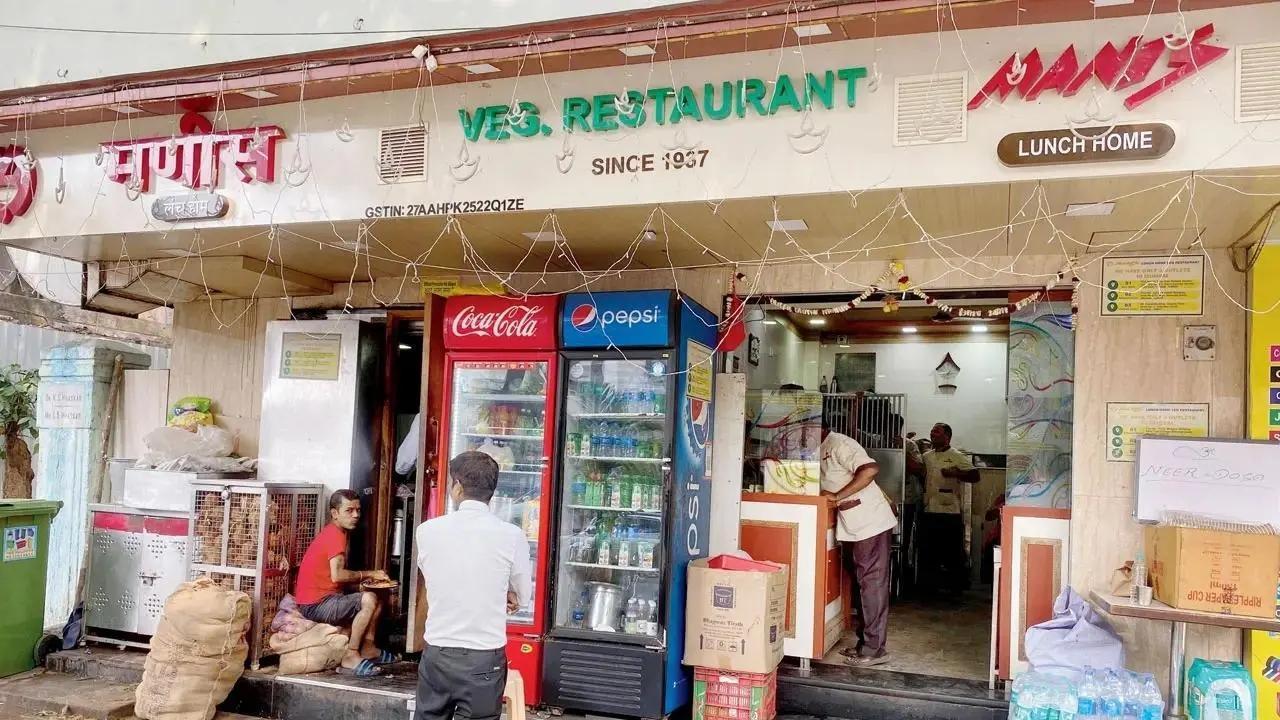As an increasing number of locations on the city’s map get converted into gated communities or redeveloped high-rises, what sort of an impact does this transformation have on the cultural ecosystem and consumption patterns around it?

Representative Image
 For those of you who track this column, you’d know by now that when it comes to wandering the streets of this city, one of the areas that offers immense satisfaction, joy [and, of late, pain too] but most importantly, insight, Matunga ranks right up there.
For those of you who track this column, you’d know by now that when it comes to wandering the streets of this city, one of the areas that offers immense satisfaction, joy [and, of late, pain too] but most importantly, insight, Matunga ranks right up there.
So a few days back, when we were longing for some authentic Udupi fare, we found ourselves strolling past the rapidly-transforming streetscape of King’s Circle and Matunga after a day in the office. As we polished off the memorable Benne Masala Dosa [that my eating companion referred to as a ‘clutch’ since its shape bore an uncanny resemblance], the star among many other goodies that followed, we managed to catch the odd glimpse of the buzz around us. It was a no-brainer to gauge why the eatery was doing brisk business. Simple menu, hearty fare, good service, old-time family-run establishment—it had all the ingredients to make it a long-playing success story.
ADVERTISEMENT
Before we could get carried away by the sheera that was singing out melodiously to us, or the filter kaapi that’s always an instant upper, we decided to call for the bill, and instead, burn a few calories by walking down the lanes of this neighbourhood since it was well before Cinderella hour. As we made our way through these familiar parts, we observed that a noticeable change had seeped into the area’s ecosystem.
In the past, thanks to our connection with Matunga that goes all the way back to our college days, we would always link it as the go-to place for all things South India—from the delicious, traditional fare whipped up by its Udupi kitchens, to its colourful flower market, to the handy kirana shops that offered all kinds of condiments and household necessities from banana leaves and MS Subbulakshmi audio CDs to set mundus. To the city-dwelling South Indian, it was a slice of home in the big city, and for folks like us, it was a reassuring stamp of Bombay’s cosmopolitan vibe, reiterating its tag as the ‘melting pot’ of cultures, where different locations represented their unique identity. Like Bhuleshwar, Bandra and Bhendi Bazaar, Matunga was a critical dot on the multi-cultural map to remind us of how the Maximum City, despite being space-starved, had ensured that communities from all across India and beyond could carve their own niche.
The past decade had also witnessed a thriving night food market that had sprung up along the broad footpaths; they lined the retail shops which went silent beyond working hours. Initially, we’d spot a few vendors in operation, mostly from handcarts—these makeshift kiosks would dish out everything from pav-bhaji to greasy Indian Chinese fare; hungry patrons would stuff their faces with this street fare while being seated on chataais; often the bonnets of parked cars would acts as temporary tables. All of this would happen within close proximity of their Udupi counterparts. It appeared like a harmless co-existence of old and new.
However, on that night as we took our usual route to grab a coffee from another Udupi, we noticed that these kiosks had mushroomed in many other parts of Matunga, standing cheek-by-jowl, and dare we say, seeming much in demand when compared to the OGs. From kebabs and spring rolls to ‘chopswey’, there was a mad rush for this fare. Interestingly, one of these clusters was a stone’s throw away from a popular Udupi that had shifted from its original address to an under-construction site a few blocks away. No prizes for guessing why—yes, its previous home was in a building that had gone in for redevelopment. It was a stark contrast, one that was probably being played out in other parts of the city at the same hour.
Also Read: Caught between budget promises and old pension scheme
If someone were to be air-dropped to this spot, they would have guessed it to be a typical khau galli located in any corner of India—same ajinomoto, same oily fare, and same plastic cutlery. It didn’t make for a pleasant sight for this columnist who’s been a dedicated observer of these parts for over two decades.
But this came as a rude wake-up call, of an eventuality that seems unstoppable. With redevelopment becoming the norm rather than the exception that’s sweeping away the original city and its suburbs, this alarming transformation could rob these parts of its true identity, from a cultural and culinary perspective. As Matunga-ites end up living in sky-high towers, or decide to move elsewhere, it’s anyone’s guess what will become of the neighbourhood.
If this is a sign of things to come, then will we see more parts of the city known for their specific identity lose their tags like Matunga, which is ‘Mini Madras’? Will we witness more such gentrified khau gallis take over the food-scape of localities, as similar cuisines and fare become the preferred choice? It made for an insipid forecast, one that even the flavourful aftertaste of the Benne Masala Dosa couldn’t rescue us from. It’s up to us, average Bombaywallahs, to offer continued support to the real culinary ambassadors who define its rich, diverse cultural fabric.
mid-day’s Features Editor Fiona Fernandez relishes the city’s sights, sounds, smells and stones...wherever the ink and the inclination takes her. She tweets @bombayana
Send your feedback to mailbag@mid-day.com
 Subscribe today by clicking the link and stay updated with the latest news!" Click here!
Subscribe today by clicking the link and stay updated with the latest news!" Click here!








